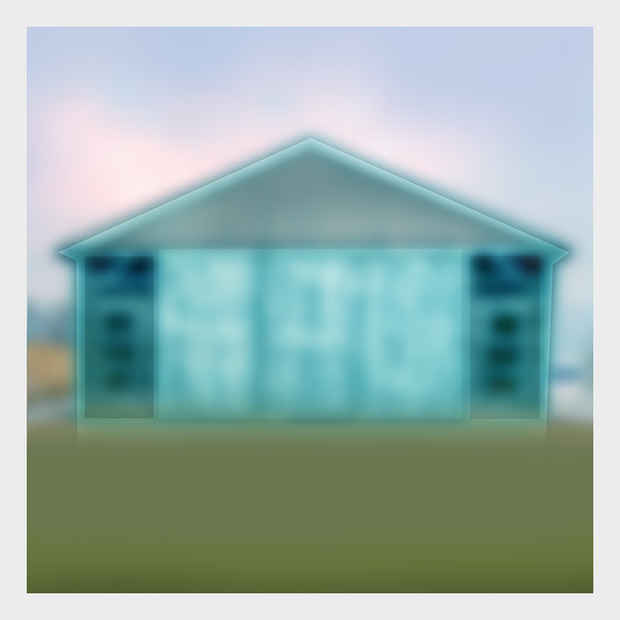“Not Of This World: Transcending Reality In Photography” Exhibition
Rick Wester Fine Art

This event has ended.
True and accurate depictions of the present world have been the central purpose of photography from its inception. Parallel to this aspect of the medium’s history has been the artist’s desire to transform the space before their lenses, to mold it to their imaginations, often into something familiar but also alien. Not of This World gathers seven artists whose approaches vary broadly but aim to the same effect of transcending reality through their photographic practices. Together, their work proposes the infinite breadth of the medium beyond the documentary and descriptive, alluding to the infinite, the eternal, regeneration, the past and the future.
Christopher Colville, Aaron Rothman and Claire Warden all hail from Phoenix, Arizona. It is tempting to suggest that an overabundance of sunlight and the vastness of the Desert Southwest inform them as basic elements of image making. In fact, none of them rely upon lens-based image making for “photographic” description. Christopher Colville works in the most basic means of making photographs – the photogram. What he brings to the process however is a worldview of infinite measure. In the works titled Ouroboros, Colville transforms a broken band saw blade into the ancient symbol of a serpent eating its own tail. Through an exposure to ignited gunpowder, his work speaks to the volatility of culture clashes today. Aaron Rothman photographs the desert night sky with an inexpensive, unremarkable digital camera, which he exploits to great effect by manipulating its settings to achieve a Pointillist altered reality where perception is plastic. In Milky Way (RGB) the vast cloud of stars that is our galaxy – our home – only slowly comes into view once the brain allows itself to see. A monumental work, Rothman takes on the universe and digitizes the abyss. Likewise, Claire A. Warden’s No. 09 (Not Your Basic Color Theory) and No. 11 (Hierarchy) are convolutions of photographic practice but with an intensely personal lilt. From mixed ethnic heritage, her body of work Mimesis [is] grounded in issues of identity, the other and the psychology of knowledge and power. The creation of this series comes at a time when the struggle to accept the unfamiliar is pervasive in our culture. When looking at these images, the urge to ask “what is it?” echoes the question, “what are you?” a question that has been directed towards me countless times and one that I find increasingly difficult to answer. Using the enzymes in her own saliva and mark making to alter her negatives, her work disrupts the insistence that a photograph be about the here and now, suggesting that there is a continuum in which we all play a part.
Tenesh Webber’s photograms call into question how exacting a photograph can be duplicated or repeated, even within an edition. By definition, a photogram is unique, but through her process of creating images by stretching thread in grids over frames, tiny inconsistencies from print to print are inherently part of the work. Like a narrator telling simultaneous tales in different dimensions, there is no single reality her pictures exist in, no way to tell which is the truest statement.
Lynn Dunham shares a certain need to reinvent the world through photography. Her images often rise from the pixels on her computer screen, creating light infused images without a credible photographic source, but with her Barns she both distills and elevates the essential characteristics of this endangered architectural structure that is so emblematic of the American landscape. Working from found images and with digital painting she creates what she describes as transcendent images, alluding to a spiritual reverence for “The Barn” rather than a documentation of these disappearing agrarian icons. Willie Osterman is also a preservationist, photographing handmade masks of various origins in both private and public collections using the 19th century wet collodion process known as tintype. The inventory he creates of unique plates is a collection of oddities that also feels equally familiar. Like Claire Warden, he insists that being different relies on an agreed upon basic knowledge of what is normal, but the variety of depictions of the human face is so grand the only conclusion is that we are all different.
Bjørn Sterri has enlisted, cajoled, and convinced his family to be both subject and participant in his photography for over 15 years. The results have been at times thrillingly intimate and at others, devastatingly defiant. His self-published monograph Family Photographs, 2001 – 2014 is an album of family photographs like no other, defining his relationships with his wife Alejandra and sons, Jens Linus and Pablo, in distinctive flavors and robust terms – a kettle of delicious stew. In his latest work, My Family, 2018, each member of his family is woven together in a visual tapestry, intertwining them in an eternal web of imagery, like a talisman, a family crest or DNA analysis.
Media
Schedule
from March 24, 2018 to May 25, 2018